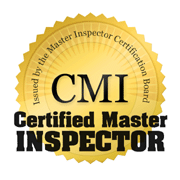Massachusetts Home Inspections YOUR INVESTMENT IS MY CONCERN

Radon Mitigation Installation
Though there are many different ways to mitigate a house, Active Soil Depressurization (ASD) (as opposed to Passive systems) is the most common and effective solution for lowering elevated Radon levels in your home here in Massachusetts. These are the type of systems that I see most of the time while inspecting homes. Active systems include PVC vent piping and a fan system which is highly recommended by the U.S. Environmental Protection Agency.
The Active Soil Depressurization concept is really quite simple. In the lowest level of the home, a four to six inch hole is cored (drilled) into the sub-slab. Soil and/or stone is then removed through the cored hole to create a hollow pit.

Then...a series of PVC pipes are inserted into the drilled hole and are completely sealed as they run vertically alongside the foundation (or interior walls) in order to properly exit the building.
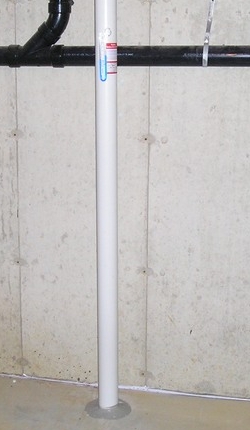
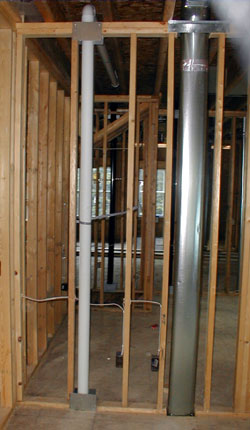
The piping will either exit the house at the top of the foundation to the rear exterior of the home (See below...image at left) or it will travel through studded walls or closets and enter an unconditioned space, being the attic (See below...image at right). A fan is then installed in series with this piping and will penetrate the roof sheathing and terminate above your roof line.
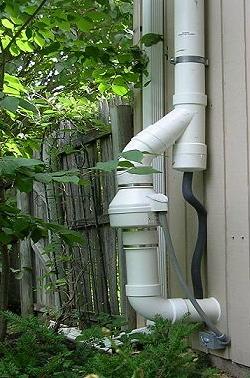
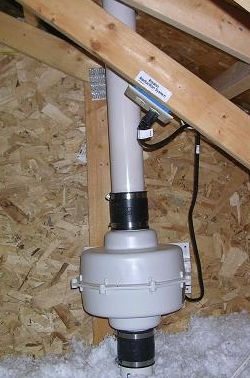
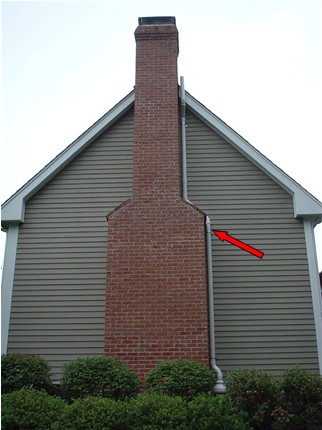
When this fan is activated it will create a vacuum beneath the slab and draw radon-laden soil gas through the piping and this air gets exhausted to the exterior of the house in a safe manner (according to the EPA Requirements). All radon entry points will then be permanently sealed, and post testing will be performed to ensure that the newly installed mitigation system is drawing only the gases beneath the concrete slab.
This type of radon mitigation system will contain a monitoring vial called a manometer (See image below). It is your responsibility to check the manometer on a periodic basis. The manometer is a pressure gauge mounted on the pipe to determine if the system is operating properly and the fan is performing as intended. The manometer should never read zero (when both liquid lines are equal to each other), this indicates that the fan is not pulling air through the pipe. You should always see these liquid lines offset which indicates that radon fan is properly drawing air from under the slab.
MANOMETER
The cost of an Active Soil Depressurization system is approximately $1,200 to $2,000. The price will vary according to the home's design, size, foundation, construction materials and the local climate. Part of the mitigation cost can depend upon what is required to conceal the system and maintain the aesthetic value of the home. For example, a retrofit system routed outside the house can reduce radon quite well, but it may not be as visually pleasing. The ASD system will lower radon levels 99.9% of the time.
Radon Mitigation in new Construction (SSD)
Are you building a new home? A radon sump should be installed while your home is under construction. This passive mitigation system (Sub-Slab Depressurization) will prepare you to activate (install a fan and electrical) inexpensively and effectively at a later date if you find that radon levels are excessive after the house is finally built. Until then, space will be made for the fan (in the attic or unconditioned space), and electrical provisions will be left (optional), and the pipe will exhaust through the roof (above the roof line).
The installation is quite easy for your builder to install before the concrete floor is poured. A sump is buried in hardcore below the floor level of the building. Before the concrete floor is poured, crushed stone is spread out over the ground surface. A high density polyethylene covering (with all seams sealed with construction tape and outside edges sealed to foundation wall) is applied over the stone to trap the radon gases and then divert the gases to the radon sump area by the negative pressure created by the fan.
A perforated pipe or drain mat is placed beneath the plastic. This pipe is typically connected to solid PVC piping and a fan, which creates a vacuum beneath the plastic when the fan is activated. Negative pressure is created in the sump and its surroundings. As the radon percolates up through the ground, it is attracted towards the negative pressure of the sump, where first it is collected then extracted, via a vent pipe through the fan, and finally discharged above roof level to be dispersed harmlessly into the surrounding atmosphere.
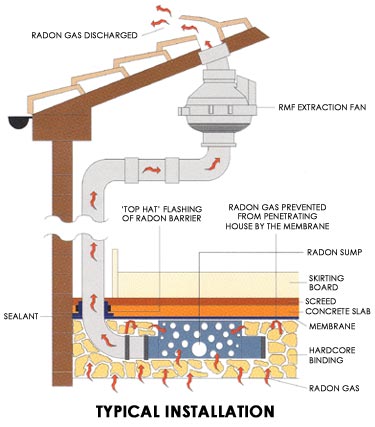
There are also other mitigation systems on the market today.
Sub-Membrane Depressurization (SMD)
SMD is performed in crawl spaces and areas that are directly in contact with rock or soil. Suction is created under a specified polyethylene or equivalent flexible material (plastic sheet) permanently installed over exposed soil or rock. Vent piping and a fan draw radon from beneath the plastic sheet and exhaust it outdoors above the highest eave.
Heat Recovery Ventilator (HRV)
When the SSD system is impractical, as is the case where there is an inaccessible crawl space, a Heat Recovery Ventilator (HRV) can be used. These systems work by changing the air in the basement with fresh outside air, which is heated by transferring the heat from the warm inside air to the incoming outside air. Additionally these systems can be adjusted to provide a slight increase in pressure in the basement. The radon reduction thus obtained will be twofold, one due to the dilution of the radon and the other by the retarding effect of the pressure increase.
Sealing Sump Pits and Cracks (picoCure)
In addition to ASD, SSD, SMD, and HRV... picoCURE ensures the effectiveness of the system by sealing sump pits and significant cracks in the basement or foundation. Sump pits are sealed with covers that include view ports. PicoCURE Radon Mitigation systems are quiet, unobtrusive, maintenance-free, and permanently installed.
SOME KEY ELEMENTS TO RADON MITIGATION
The discharge shall be at least 10 feet above grade, 10 feet away from any opening that is less than two feet below the discharge, and above or at the eave of the roof.
The piping may also be routed up the outside the home, but the discharge must still meet the above criteria.
System fans should not be located inside the home or in a crawlspace. They can be in an attic, outdoors, or in a garage, provided there is no living space above the garage.
There should be an indicator located in a prominent location (see "Manometer" image above) that will easily indicate to the occupant that the system is functioning properly.
Power to the fan should be run in accordance with local electric codes; including permits where required.
All portions of the radon mitigation system are to be labeled and a simple instruction manual (with warranties) should be provided to the homeowner.
All homes with mitigation systems should be re-tested no sooner than 24 hours (nor later than 30 days) after installation to verify reduction in radon levels. The home should also be retested every two years.
Here is what my clients have to say about my home inspection services:
Press F5 (on your keyboard) for additional testimonials
Hi David,
I just wanted to send you a quick note to thank you again for your help yesterday!!
Andy and I are very appreciative of all of the information you provided us with, and we both feel that we have an excellent understanding of what needs to be done to this home, and can make our decision with assurance. The tips that you provided us with are invaluable, and I will definitely recommend you to anyone I know that is or will be buying a home.
Thank you again!
Alyssa



